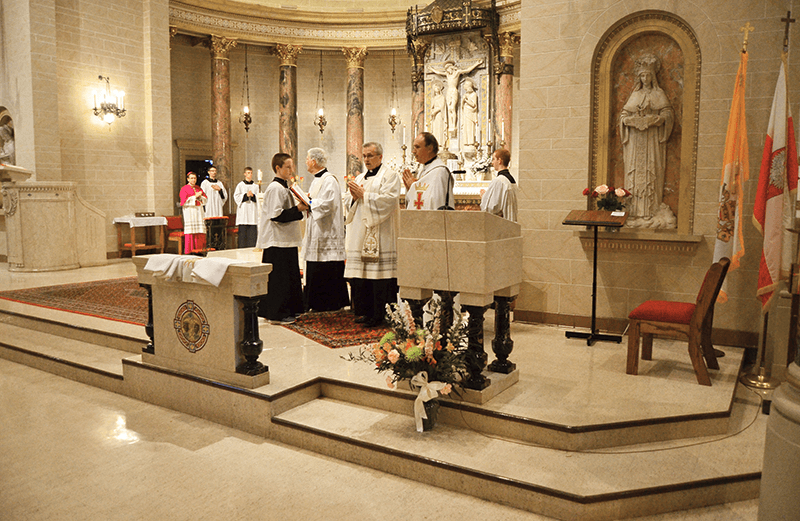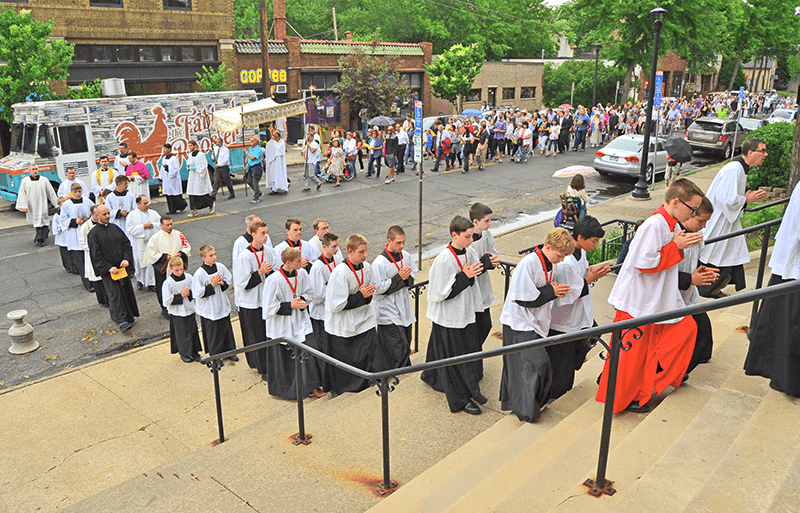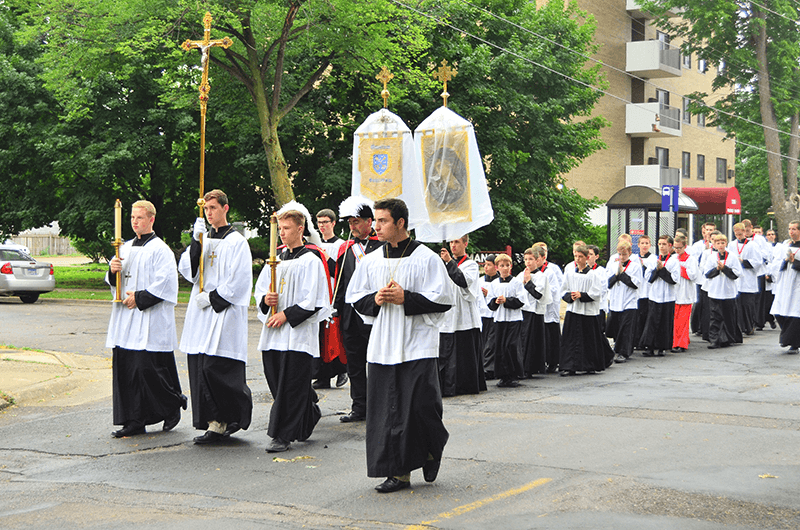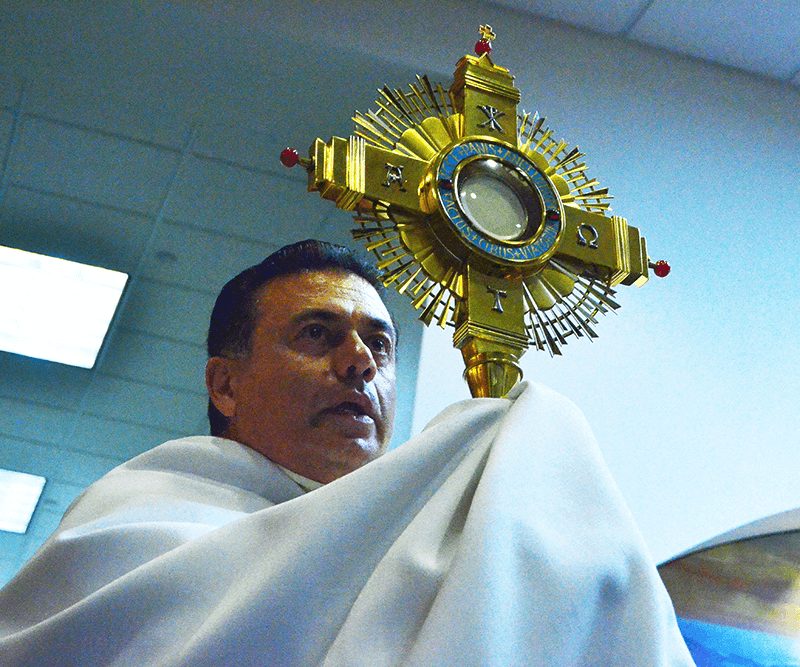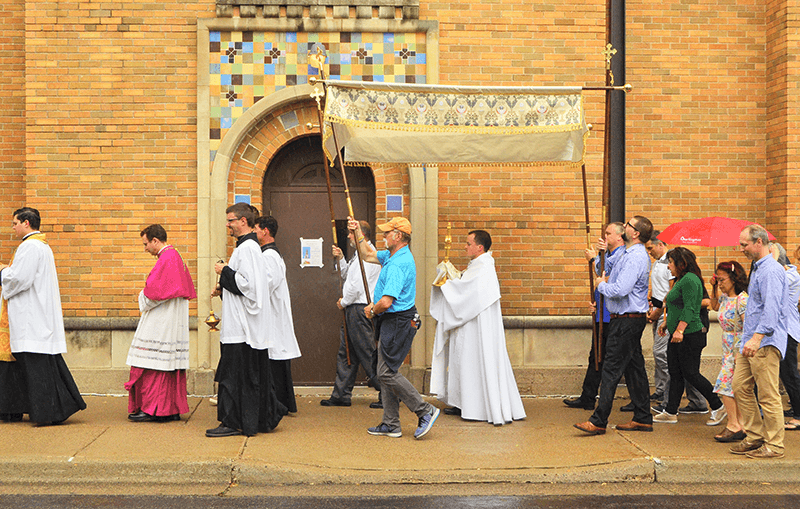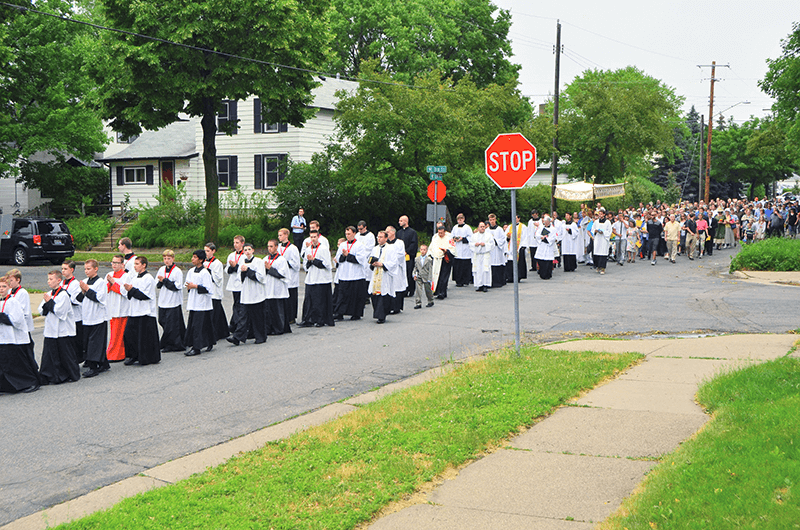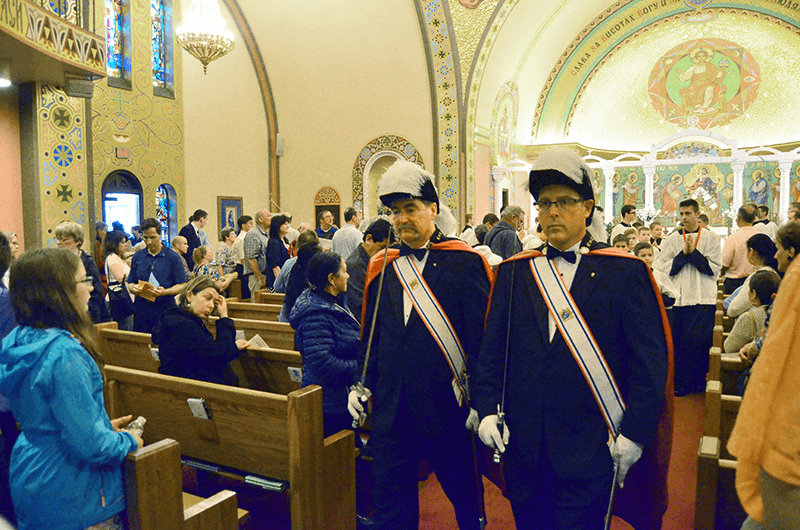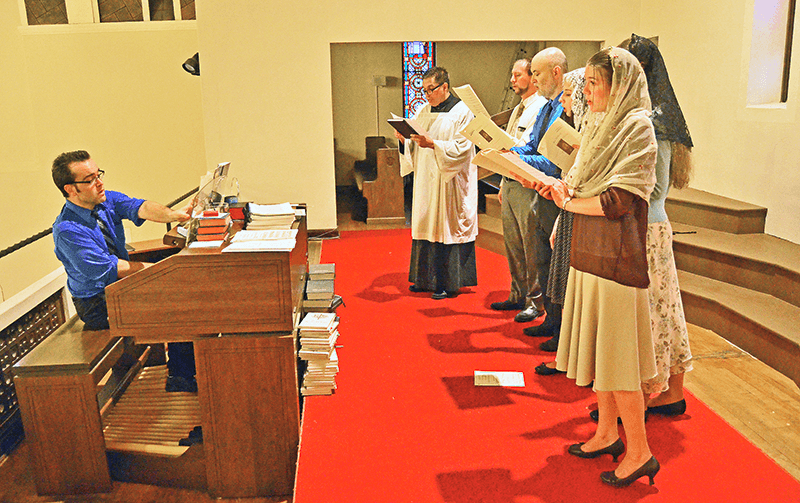The Catholic Church has a long tradition of processions, dating back to apostolic times. In the Middle Ages, there were religious processions for thanksgiving, calamities, war, famine, even processions to drive away storms or to call out for rain. Later, Catholic processions became more religiously solemn, and included the Stations of the Cross, reading gospels, praying rosaries, and carrying the “Blessed Sacrament.”
In 2004, Fr. Glen Jenson, then pastor of St. Anthony of Padua church, and Fr. sharbel Maroun of St. Maron, felt that a revival of a Eucharistic procession was a good way to bring together a number of churches and parishioners in the Northeast area. Influenced by Pope John Paul II’s last encyclical, “The Gospel of Life,” they set out to organize a neighborhood procession.
In the introduction of “The Gospel of Life,” the pope writes of “The wonderful truth recalled by the Second Vatican Council: “By his incarnation the Son of God has united himself in some fashion with every human being.” Both pastors saw a celebration of the Holy Eucharist, or “Blessed Sacrament,” as a fitting symbol of the encyclical’s affirmation for all life.
The procession is now in its fourteenth year. It begins on the second Sunday in June with prayers at Holy Cross; lines of servers in their cassocks and surplices leave the church, with priests and bishops following a pastor holding a monstrance enclosing the Eucharist. The monstrance and its bearer are protected by a canopy, whose corner poles are held by four more bearers. Parishioners follow as the procession winds its way through the neighborhood streets.
This year’s group included Auxiliary Bishop Andrew Cozzens.
June 11, the group followed the traditional route (Holy Cross to Saints Cyril and Methodius, then to St. Anthony of Padua chapel, St. Boniface, St. Maron, St. Constantine, ending at All Saints Church. At each stop, all of the marchers entered the church, sang psalms and said prayers before proceeding to the next. At St. Cyril, the Ave Maria was sung in Spanish, and at St. Maron, one of the prayers read was in Aramaic, the language of Jesus. At some streets, notably Broadway Street and University Avenue, police escorts stopped traffic so the procession could pass.
Marchers sang hymns while walking between churches, ignoring the light rain that at times threatened to halt the procession (but never did).
Pastor Jenson said that people who have marched in the processions tell him that the events help build their faith and give an ecumenical feeling with the connection between Catholic churches with Roman, Maronite, and Ukrainian rites.
Sunday, June 24, was Jenson’s last day as the pastor of Holy Cross, ending a nine-year stint. He has also served as pastor of St. Anthony of Padua for 13 years. He will begin as pastor of the Church of St. Patrick in Edina on July 1st. Holy Cross’ new pastor will be Father Spencer Howe.
Below: Beginning prayers inside Holy Cross, entering Church of Saints Cyril and Methodius, heading to St. Anthony of Padua chapel with shields for the rain. Father sharbel Maroun with the monstrance. Outside St. Boniface, with Auxiliary Bishop Andrew Cozzens in rose cassock. The procession along 16th Avenue, inside St. Constantine’s, and the All Saints choir. (Photos by Mark Peterson)
